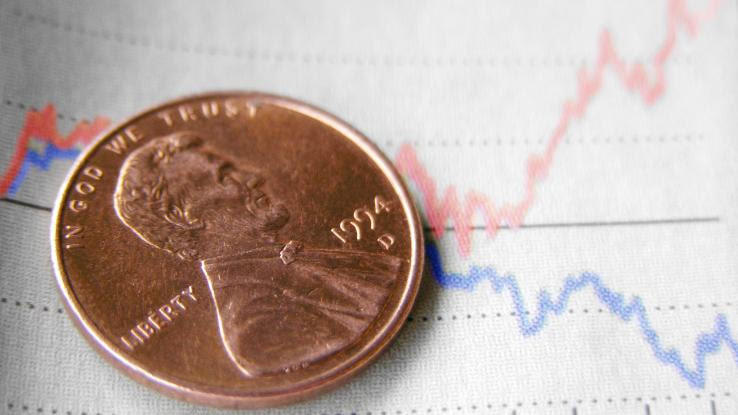Where to Put Common Stock on Balance Sheet

If you're in the early stages of learning about stocks, you're likely also learning the ropes of stock markets themselves. After all, if you want to start investing in these financial products, you need to know where you can trade them. Stocks are traded on exchanges — some of the most familiar of these being the big names like the New York Stock Exchange (NYSE), NASDAQ and the Chicago Stock Exchange.
But not all stocks are traded on these famed exchanges; there are special types of stocks you'll have to seek out elsewhere, some of which are called OTC pink sheets. If you've heard of these stocks and are curious about investing in them, it's important to know a few key things first. We'll fill you in on what OTC pink sheet stocks are, what kinds of characteristics they have, and the pros and cons of trading them — the must-know essentials to understand before you make the leap toward investing in these unique stocks.

Pink sheets are a type of stock that isn't listed or traded through a major U.S. stock exchange, such as the NYSE or NASDAQ. Instead, they're traded over-the-counter (OTC), meaning an investor purchases them directly from a company through a broker instead of via an exchange middleman. There's a variety of reasons that a company may choose to go the pink sheet route, but usually, it's due to the fact that the stocks don't meet certain requirements that allow them to be listed on the major exchanges.
Pink sheet listings tend to be stocks of smaller companies, some of which may also want to avoid the cost and regulatory requirements that come along with being listed on a major exchange. Because they're traded OTC, pink sheet stocks aren't subject to the same strict guidelines as publicly traded companies that trade on major exchanges.
For instance, while publicly traded companies are required to file with the Securities and Exchange Commission, pink sheet companies are not. They're also not required to be nearly as financially transparent as companies that are traded on the major markets. Shares of many (but not all) OTC pink sheets also tend to be priced at less than $5, qualifying them as "penny stocks."
So, Why Are They Called "Pink Sheets"?

Pink sheets get their name from the fact that their quotes used to be printed on pink sheets of paper years ago. Pink Sheets was also the former name of a company that's now known as OTC Markets. Because the companies behind pink sheet stocks aren't traded on the major U.S. markets, they can sign up to be listed through OTC Markets, which makes them available on a broker-dealer basis.
OTC Markets makes it much easier for smaller companies to start selling shares than the major U.S. exchanges do. There are three different tiers offered to companies that want to trade OTC shares, and the classifications depend largely on how much information the company is willing to provide.
OTCQX
Companies that want to be listed in the OTC Market's OTCQX category are subject to much more thorough review and have to meet certain government and financial standards.
OTCQB
Companies that want to be classified under the OTCQB category enjoy standards that are much more relaxed. They do, however, still have to meet certain filing requirements.
Pink Sheets
Pink sheets are sort of like the Wild West of stock listings because there are very few qualifications a company must meet to get listed. Pink sheets are known as the "open market" because just about any company can get listed in this category.
The Pros and Cons of Trading OTC Pink Sheets

One of the clearest perks of trading pink sheet stocks — and a big part of their appeal — is that, because many of them are penny stocks, they tend to be highly affordable. Often, pink sheets trade for under $5 and some go for even less than $1 per share. Before you jump in headfirst, however, you should know that trading pink sheet stocks is very different from trading stocks on the major exchanges.
Because companies don't need to follow as many regulations to list as pink sheets, it tends to be much harder to find the kind of financial information you need to make informed trading decisions. While this information is freely provided on the larger exchanges, pink sheet trading requires a much higher level of independent research. For this reason, pink sheets tend to be speculative, and large institutional investors generally avoid them.
Additionally, the lack of regulatory requirements associated with pink sheets can make them low-hanging fruit for scammers or pump-and-dump schemes. Last but not least, pink sheets tend to offer much lower liquidity than stocks that trade on the major indexes. That means that it may take much longer to generate a sale, which gives the price more time to fluctuate before your order goes through.
So, why would anyone trade these stocks? Pink sheets tend to be popular among day traders who are attracted to the higher level of volatility. While they aren't really the kind of stocks most people invest in for the long run, they can be profitable if you manage to catch the right one before a major upswing. On the other hand, you can just as easily lose money very quickly if you invest in one on an off day.
How and Where Are Pink Sheets Traded?

If you're interested in trading pink sheets, it's vital to do your due diligence in order to learn the specific trading style they require. Practicing on trading simulators is also a great idea; you can hone your decision-making skills without risking any real money until you become comfortable enough in your capabilities to do so.
Once you've mastered the art of OTC pink sheet trading, you'll need to sign up with a broker who offers them. Due to the risky nature of OTC stocks in general, some brokerages, such as Robinhood and Webull, don't offer OTC stocks at all. Others, however, do partner with OTC Markets to list stocks on their platforms. Be aware that some may also have fees that come along with pink sheet trades, and do your research before signing up.
Some of the best online brokerages that currently offer pink sheet trading include:
Interactive Brokers
Interactive Brokers charges one of the lowest transaction rates per share when it comes to pink sheets and penny stocks, with fees of either $.0035 per share or a max cost of 0.5%. If you're looking for the most cost-effective option, Interactive Brokers may be your best bet overall.
TradeStation
TradeStation offers a strong desktop experience for penny stock trading and low fees. Again, be sure to do your research — volume discounts, minimums and maximums may apply.
Charles Schwab
Another of the stronger trading platforms for penny stocks, Charles Schwab offers a relatively low price of $4.95 per trade and has a wide variety of selections.
MORE FROM ASKMONEY.COM
Where to Put Common Stock on Balance Sheet
Source: https://www.askmoney.com/investing/what-are-otc-pink-sheet-stocks?utm_content=params%3Ao%3D1465803%26ad%3DdirN%26qo%3DserpIndex